My day as a European Tour caddie
GM was recently given the chance to be a European Tour caddie with Tyrrell Hatton
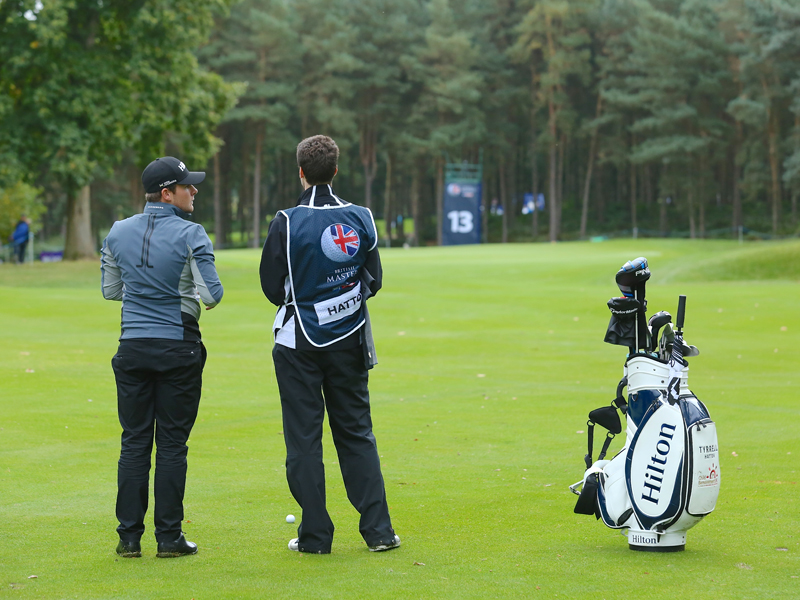
Golf Monthly's Jake O’Reilly was recently given the chance to spend the day as a European Tour caddie on the bag of Tyrrell Hatton during the British Masters’ Pro-Am, but as he soon found out, there’s more to the job than just working out numbers...
My day as a European Tour caddie by Jake O'Reilly
As I stood outside a bustling Woburn clubhouse waiting for Tyrrell Hatton to finish his warm-up massage on the European Tour physio truck, I was quite nervous about what the next few hours caddying for him had in store for me. The only thing I was pretty certain about was that right now, he was probably feeling a lot more relaxed than I was.
Keeping me company, and a keen eye on his man’s clubs for the time being, was Tyrrell’s usual European Tour caddie, Australian Kyle Roadley – or Roachie as he’s known by everyone on tour – who was in a jovial mood despite the rather wet and windy October weather. This was probably something to do with his impending day off that would see me lug Tyrrell’s bag round Woburn’s rolling 7,150 yard Duchess layout.
Roachie (below left) has been on Tyrrell’s bag since the 24-year-old enjoyed a superb run of form late in his 2013 Challenge Tour season, which saw him climb from 46th in the rankings with five tournaments to go to 10th, which earned him full playing rights for 2014. Roachie’s 18 years as a European Tour caddie have also included stints with Adam Scott, Michael Campbell, Richard Green and Marcel Siem.
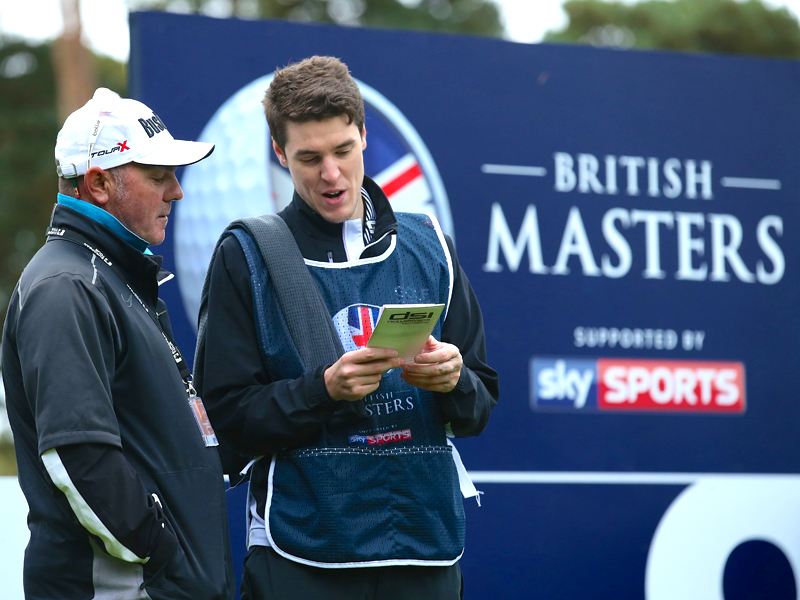
As he explained to me, his role as European Tour caddie is as much about keeping his man in the right place mentally as it is about getting the clubs right. With a lot of golfers, especially those who wear their hearts on their sleeves, the caddie’s role as a calming influence can be invaluable, and learning what makes a player tick is often the hardest thing to master.
Thankfully for me, the gentle nature of the Pro-Am, where Tyrrell was hosting a Hilton team and nothing was on the line, combined with playing partners happy to have a laugh – often at my expense, as I’d soon find out – meant my psychology skills were never called upon. That was just as well really, as I had plenty to learn as it was, and I was about to be thrown in at the deep end…
Get the Golf Monthly Newsletter
Subscribe to the Golf Monthly newsletter to stay up to date with all the latest tour news, equipment news, reviews, head-to-heads and buyer’s guides from our team of experienced experts.
As Tyrrell joined us with a spring in his step, we established a plan of action for the next 45 minutes before our tee time, which included shots on the range and hitting a few putts.
I learned on the shuttle buggy to the range that Roachie counts himself lucky when it comes to Tyrrell’s practice habits. A confessed ‘feel player’, Tyrrell doesn’t like to hit many balls before or after his round, so while a lot of caddies are out on the range for hours, Roachie is normally back at the hotel with his feet up having already got the bag in shape for the next day.
Or occasionally, he’s able to make the most of his list of global contacts, like today, when he’d arranged to take a private tour of Red Bull’s F1 factory in nearby Milton Keynes.
That’s certainly a part of the European Tour caddie lifestyle I could get used to. First up though, I had to get the basics right. Basics like remembering to put the 50° wedge back with the PW and not with the 56° and 60°, which earned me ‘strike one’ on Woburn’s driving range.
My strikes would rack up through the day, each passed down from Tyrrell with a glint in his eye while trying to stifle a smirk, much to the amusement of Roachie, who hung around for the remainder of the round to offer pearls of wisdom and typical Aussie ribbings in equal measure.
The Hatton/O’Reilly partnership officially got under way on the 159-yard 6th, one of the easier holes on Woburn’s Marquess’ course. It’s just as well, as studying a tour yardage book is a bit like reading hieroglyphics.
To give you an idea, the stream of information staring back at you includes the length of the tee boxes, yardages to hazards, humps and run outs off the tee and yardages from trees, sprinklers, bunkers and painted spots to the front edge of the green, each with accompanying elevation changes and distances from the tee.
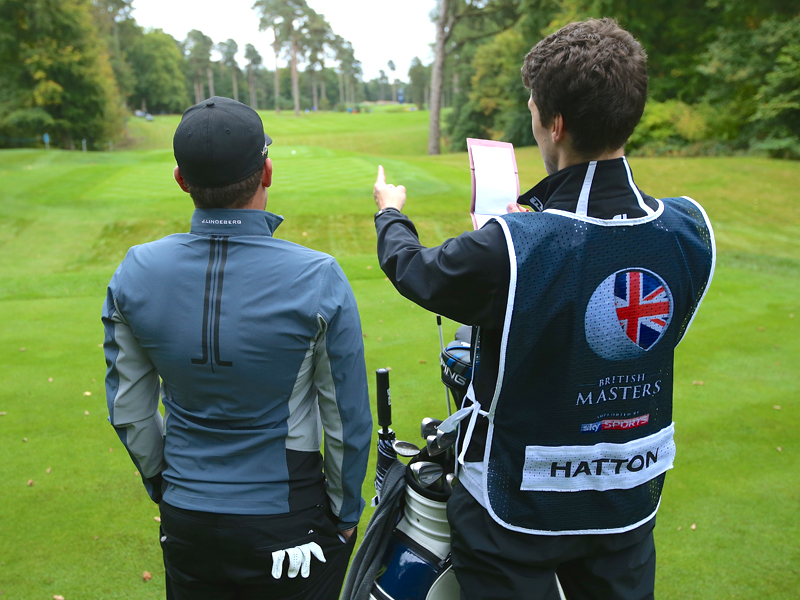
Computing these numbers quickly and working out the direction of the wind – which was helpfully funnelling in one direction through Woburn’s iconic tall pines but blowing another above the treetops – is a European Tour caddie’s bread and butter, and our player-caddie relationship nearly got off to a rocky start when Tyrrell’s opening tee shot barely clung to the back fringe.
While overseeing a thankfully straightforward two-putt, Roachie talked me though his usual greenside routine, which over the coming holes I slowly managed to come to terms with.
His method starts with laying the bag down on the side of the green nearest the next tee, with the putter handover having already happened on the way to the green. He’ll then follow Tyrrell to his ball and offer to clean it, before tending the flag if needed and taking the putter back once he’s holed out.
Having a simple step-by-step list like this to follow kept me on track, with my calculations speeding up with each attempt and my understanding of Tyrrell’s thought process and carry numbers slowly bedding in.
He wasn’t playing too badly either, which certainly helped keep the mood upbeat, knocking a wedge to tap-in range for birdie on the signature par-5 7th and only dropping one shot between the 8th and the 10th. Heading to the 579-yard par-5 11th I was busy packing the putter away and simultaneously studying a tricky pair of left fairway bunkers in the yardage book. Stood on the tee contemplating whether to attack the dogleg or lay up safely, Tyrrell asked for his towel.
It wasn’t there.
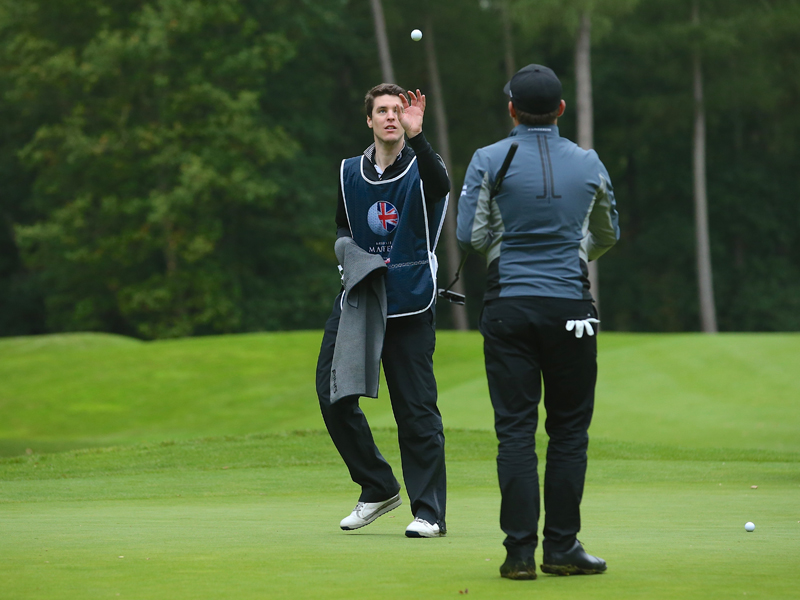
In an instant my calm internal monologue turned to flashing red lights and panic stations. I searched the bag and surrounding tee box in vain, before legging it back towards the 10th, praying it hadn’t fallen to a muddy grave.
It wasn’t where I left the bag moments before when Tyrrell got up and down from a greenside hollow. I started to worry now, questioning my memory. I was sure I used it to clean the putter en route to the tee. I began to retrace my steps back towards the British Masters-emblazoned boarding that hid the 11th tee from view.
As I got closer to the tee I noticed the small gallery was taking a particular interest in my struggle, perhaps sensing they were about to witness a rarely seen on-course sacking. But then it appeared, dangling from the fingers of a solitary arm held out from behind the tee box boarding. At the end of that arm was the body of one Tyrrell Hatton.
I’d been had. Unsurprisingly, the look on his face was not one of remorse, but that of a man stifling a fit of laughter, an emotion shared by our Pro-Am entourage and the gallery who were quickly in on the gag.
If there were any ice left to be broken, it had now been comprehensively shattered. It came at a good time as we embarked down the 11th to tackle a string of testing holes that could easily have seen me fall flat on my face.
Stepping onto the 12th tee we faced 303 yards of risk-reward golf at its best, and the type of hole where a European Tour caddie lives or dies by the decision he makes.
With water running across the front of the green at around 270 yards and a pond to its right, not to mention a fairway ditch you must first carry at around 180 yards, it got me nervously computing a series of numbers.
Tyrrell’s driver carry at 280 would normally be enough, but hitting into a cold October wind it would need to come right out of the middle. If he reaches for his driver, I thought, should I tell him to make sure he hits a good one? That sounded like caddie suicide to me.
His 3-wood, on the other hand, had plenty to carry the first ditch and would hold up before the pond. Therefore, it was surely the percentage play we so often hear the commentators bang on about.
Tossing up the options, I saw how Roachie’s brash Aussie nature must be just what the partnership needs at times, especially if things are getting tense on a Sunday.
My job at this moment had been made clear during an earlier discussion with Roachie about the yardage books and Tyrrell’s strategy. Give him the numbers he needs, discuss the wind and then let him make his own decision.
Occasionally, if Tyrrell’s leaning towards something Roachie’s worried about, he’ll ask him if he’s sure and to talk through his thought process, but he’ll never straight up hand him a club or tell him what to hit.
It’s a similar affair around the greens, where Tyrrell will assess the lie, slopes and pin position and choose his own club, as well as reading his own putts – a combination that took a significant weight of my shoulders.
With the 12th navigated safely via a fairway wood, wedge and two-putt combo, I settled back down into the task at hand. By the time we reached the tough par-4 18th the crowds were building, but I felt reasonably confident that I could pass by them without being called out as a fraud – I had the bib on after all.
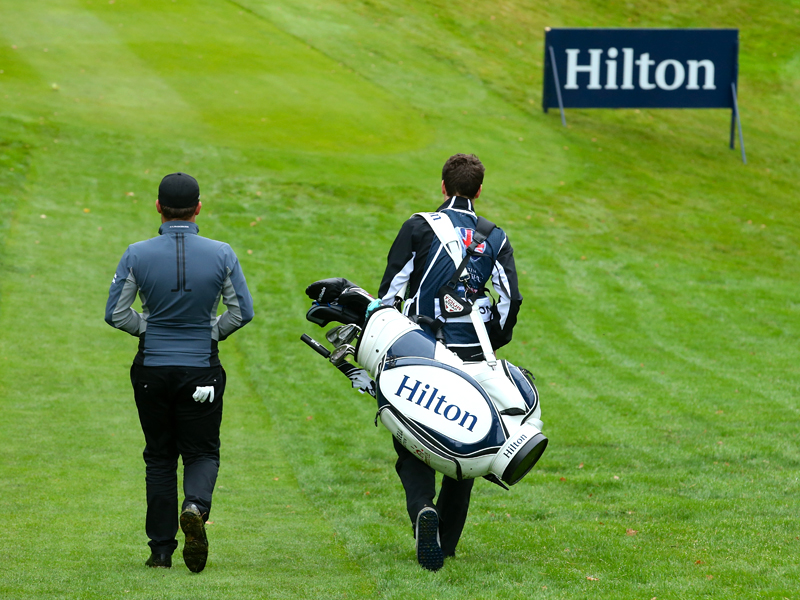
Tyrrell’s scoring seemed to vindicate my confidence, as we birdied each of our last three holes to end the day on a high (a good omen in hindsight, as Tyrrell went on to finish the week T13 and earn over €60,000 during his fifth-best result of the year).
Our closing purple patch and my new-found speed with the yardage book gave us more time to chat, and it became quickly apparent that despite career earnings of over €1.6m at just 24 years old, Tyrrell is still just a normal lad from High Wycombe.
Once he’d finished for the day, he’d drive south an hour or so to his parents in Buckinghamshire for dinner with them and his girlfriend. His dad, and fellow professional, Jeff, is also his swing coach, and has been since his son first started competing aged five.
With the last putt knocked in I wiped down the tour-issue Scotty Cameron putter one last time. For Tyrrell, it certainly wasn’t his final Pro-Am witnessing an amateur out of their depth, but for me, it was quite possibly the last chance I’d get to experience life as a tour caddie, and that’s probably just as well.
Roachie's guide to strategy
Be specific off the tee The European Tour caddie yardage books detail individual trees you can see from the tee from a POV angle, as well as from an overhead view. Picking a very small target, like a tree trunk, will help narrow your focus and the size of your miss area.
Don’t get greedy Whether it’s coming out of a bunker or flying trouble from the rough, you must focus on going from a weak position back to a strong position as quickly as you can, even if that means leaving yourself a longer next shot.
Cover off false fronts and run-offs When playing into a green you’ll want two key numbers before you take into account the playing conditions. One will be carry to the flag, and the other what you need to avoid, such as a false front or tier. Normally the trouble is at the front of the green, so most amateurs will benefit from trying to carry it between the flag and back edge.
-
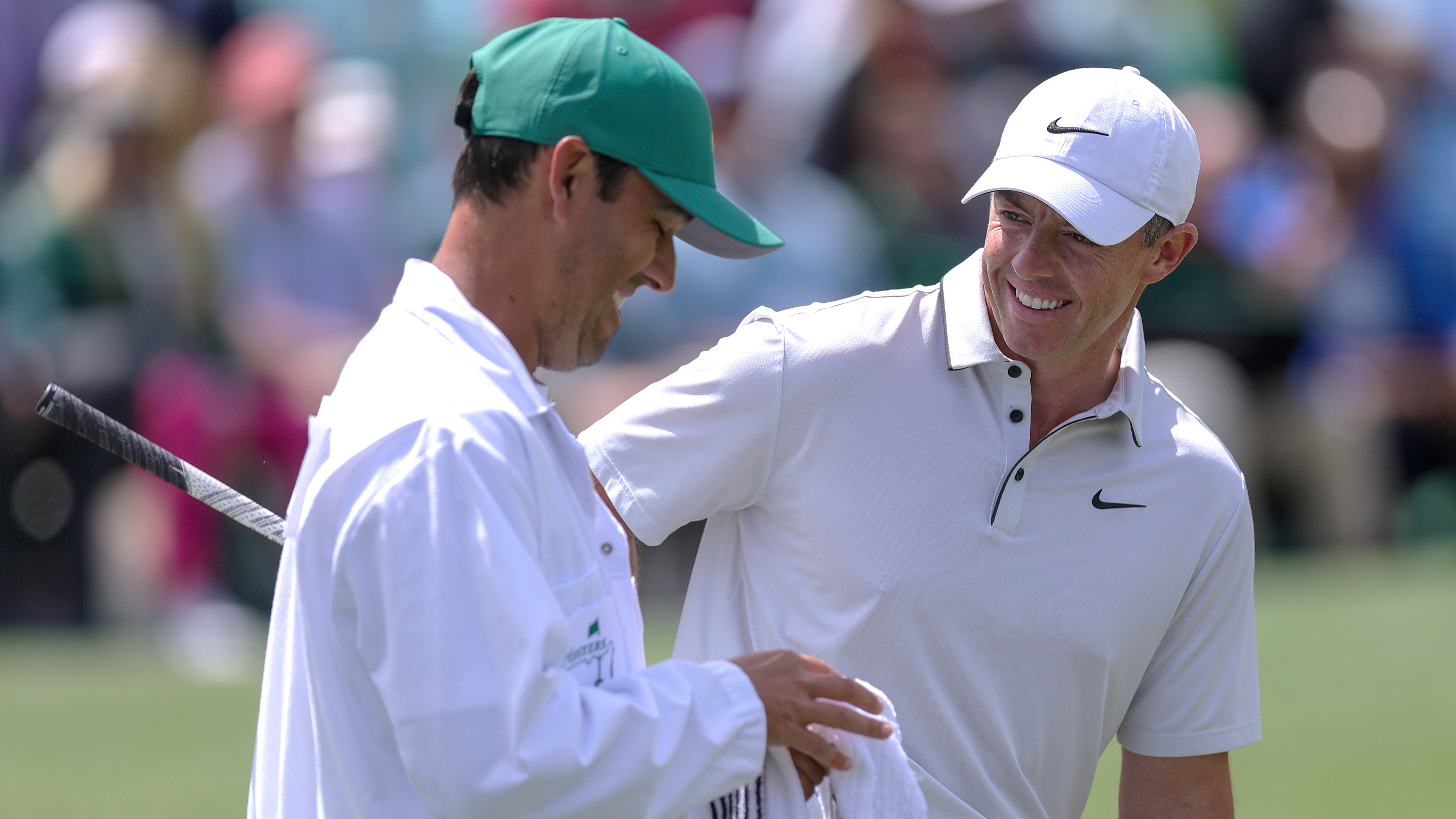 The Masters Final Round: TV Coverage, Live Streams, Start Times As Rory McIlroy Battles Bryson DeChambeau And History
The Masters Final Round: TV Coverage, Live Streams, Start Times As Rory McIlroy Battles Bryson DeChambeau And HistoryAll the info on live streams, TV broadcasts, and free coverage of one of the most hotly anticipated final days of any Major as McIlroy battles with DeChambeau
By Patrick Fletcher Published
-
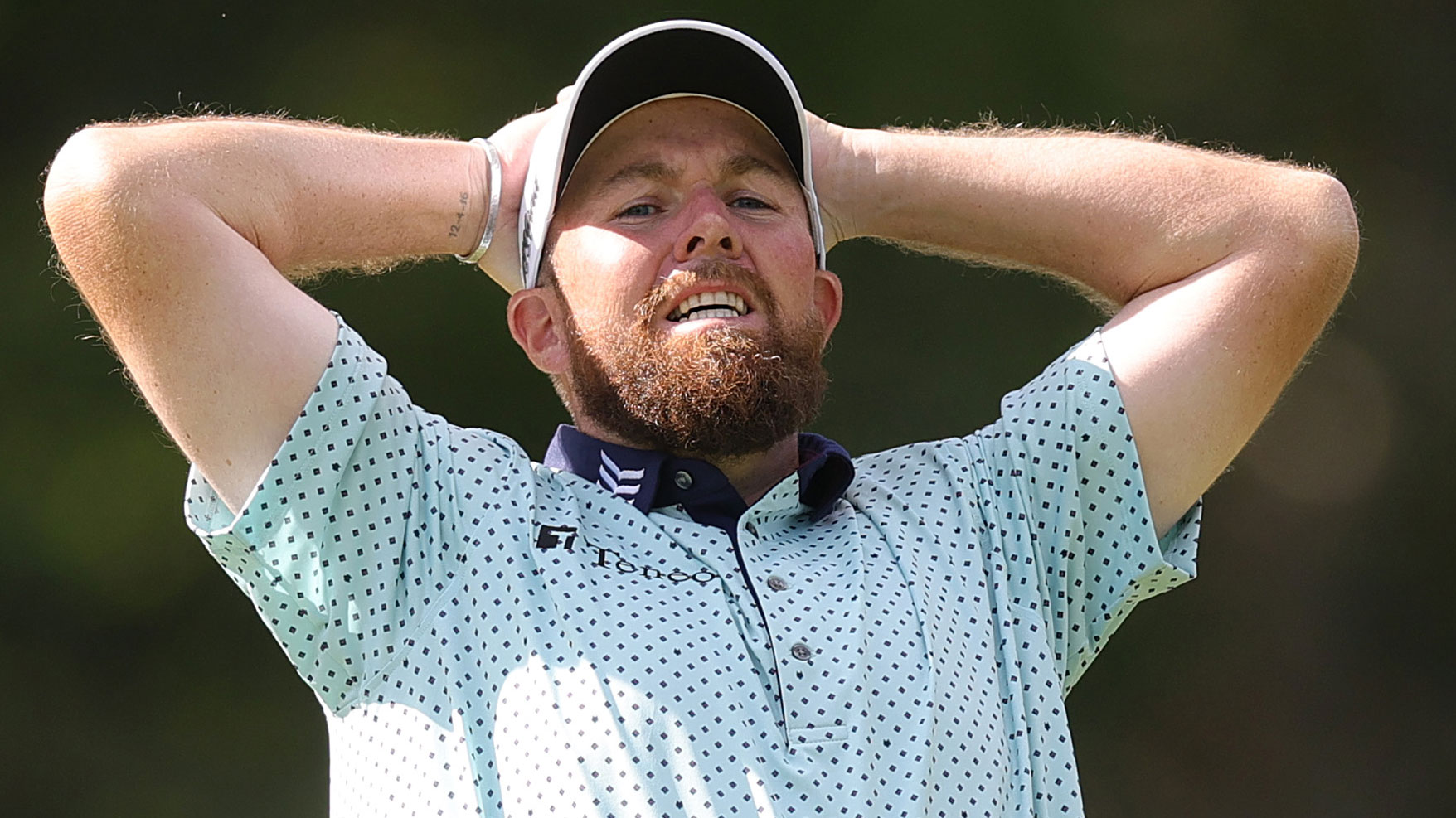 'I'm Not Going To Stand Here And Talk About Rory For 10 Minutes' - Shane Lowry Frustrated After Late Slip
'I'm Not Going To Stand Here And Talk About Rory For 10 Minutes' - Shane Lowry Frustrated After Late SlipThe Irishman spoke to the media after his round, but he was in no mood to discuss about McIlroy
By Michael Weston Published